Workshop 2 introduced two cases, Okayama Prefectural University and Shinshu University, which are making efforts to lead to regional zero carbon, with Professor Mita Nakajima of Shinshu University as the facilitator.All of these are projects that have set foot on the ground by taking advantage of the characteristics of each region.Interesting presentations continued on how zero carbon is related to the production of human resources from universities.
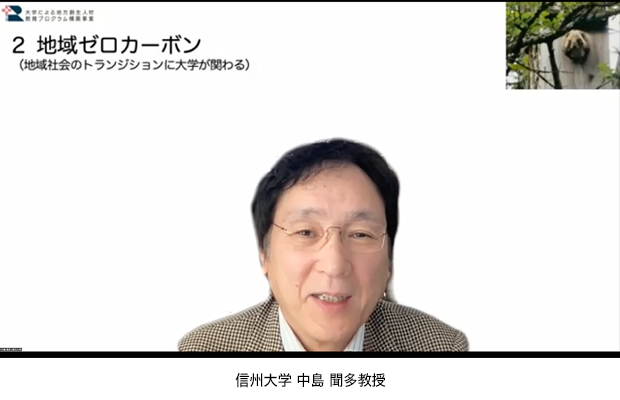
"Kibi no Mori" Creation Strategy Project ── Rebuilding the circulation of water and conserving the global environment with trees
The first presentation was the "Kibi no Mori" Creation Strategy Project by Okayama Prefectural University.Professor Toru Mukaiyama of the Department of Architecture, Faculty of Design first explained the importance of water circulation and forests in the natural world. Based on his own specialty, he wants to make a tree that has grown for 100 years a home that can be used for more than 100 years.However, the abandoned artificial forest has become a big problem, and I introduced the disaster in the Chugoku region that caused floods and landslides due to the decrease in water retention capacity and ground strength.
The irrigation project carried out by the Okayama Domain during the Edo period and the achievements of Tsuda Nagatada, who was a magistrate of architecture, are highlighted.Nagatada Tsuda is a person known for building Korakuen, and was also involved in the Shizutani School, a school where ordinary people can study.Here, you can see various ideas to return rainwater to the sky.In addition, the irrigation business has adopted a method of reducing the momentum of water, and its effects are still being demonstrated today.Even when the surrounding forests were cut down due to the war, the forests around Shizutani School remained.Professor Mukaiyama explained that he understood how important it was.
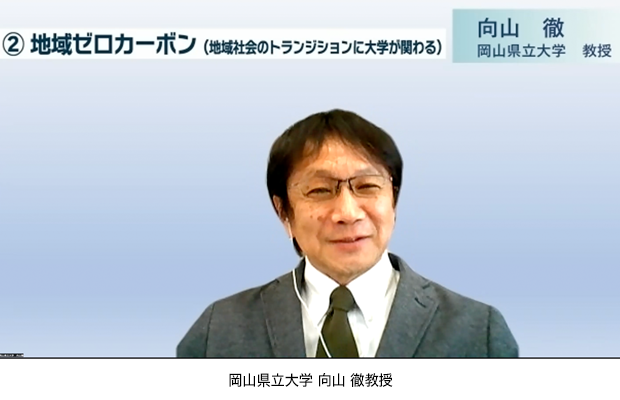
Projects that integrate various fields
Next, Professor Mukaiyama explained the curriculum that integrates forest, ground, tree structure, and environmental design exercises.In addition to the privileged environment where you can practice forestry on campus, you will also touch on the contents of engineered wood exercises and tree structure studies.And, as an example of collaboration with the outside, a project to derive the amount of forest required for a new town by energy estimation conducted with a construction company, a project to develop a hardwood structural material with a design office studying a case in Europe. Introduced the results of a restaurant that can be used as an evacuation shelter in the event of a disaster by remodeling an abandoned nursery school with cedar wood.
In addition, in this year's graduation design case, we also explained the research on rice terraces as a satoyama regeneration plan.We are proposing the role played by rice terraces, the decrease in biodiversity due to the decrease, and the construction of observatories, workshops, and lodgings with new ideas to solve these problems.In addition, we will introduce a plan to produce bioethanol from seaweed eelgrass and plastic waste as raw materials and generate electricity from it. We introduced the various aspects of the "Forest, Architecture and Takumi" program of the "Kibi no Mori" Creation Strategy Project.
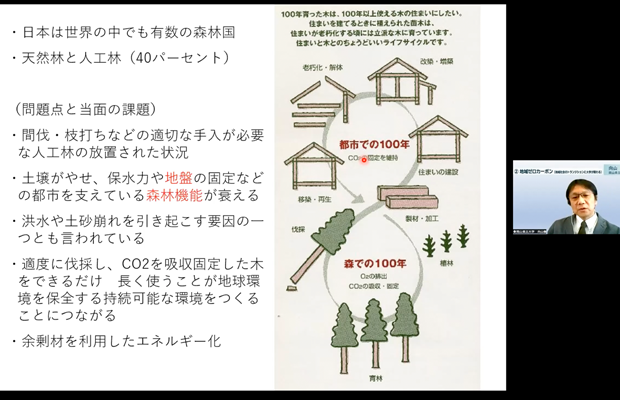
Regional energy transitions and universities ──What is the role of university people?
The next case study is "Regional Energy Transitions and the Role of Universities / University People" by Associate Professor Tsunehide Chino of Shinshu University.The theme is how to think of a zero-carbon, decarbonized society as a university as a region. A major feature is the "foot-based" survey.In an interview survey with Ueda City's efforts to operate a solar power generation business with the trust money of residents, the opinions that "the threshold of participation is low" and "interesting" were drawn up.In addition, we conducted a survey of all wood-burning stove users in Azumino City.We conducted a visual survey of all 4 households in the city and identified 1640 households.It is used for satoyama regeneration plans through local production for local consumption of firewood.Students can experience the attempt toward zero carbon in the region.
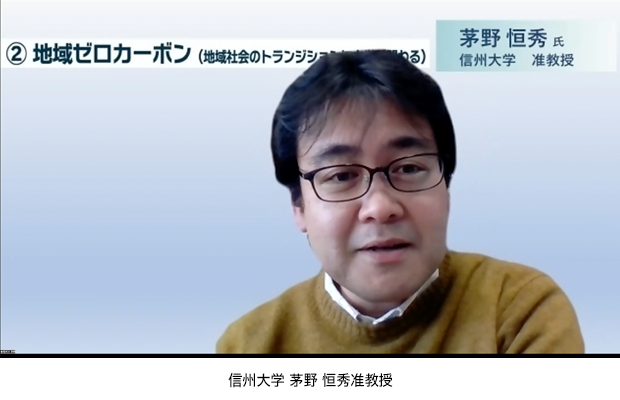
Universities drive collaboration with local communities
In Nagano Prefecture, as a zero carbon strategy, greenhouse gases will be reduced by 2030% in 6 and zero in 2050.We have also set targets for significant reductions in renewable energy production and final energy consumption.Associate Professor Chino continued that industry-government-academia collaboration is indispensable for solving problems for energy conversion while improving the prefecture's economy.It is necessary to identify issues in municipalities, regions, and industrial fields, and to introduce renewable energy reasonably.Therefore, the existence of a university is important.It is said that when teachers who have a network with the local community go out, they will listen to the story and be convinced. Universities can lead the region by "running among stakeholders and becoming a platform for themselves."In other words, it has the potential to connect industry-government-academia money.
He also introduced the Distributed Energy Technology Institute at Kassel University in northern Hessen, Germany.He said that he would like to organize a network at the center of the region and develop actions such as getting a bachelor's degree at a university, and there is a momentum to promote regional zero carbon while introducing the movements in various parts of the prefecture. I concluded that it is increasing.
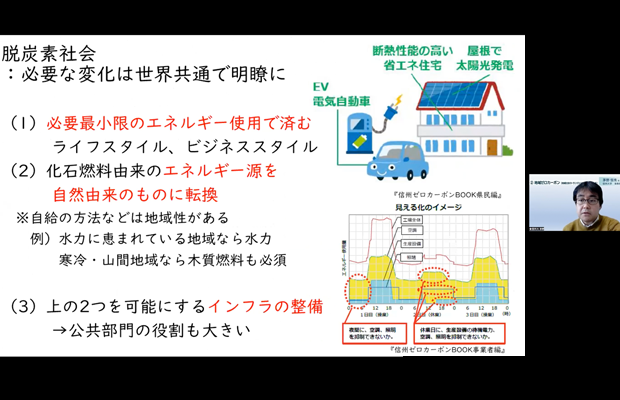
If we can produce excellent human resources from inside and outside the university
In the final discussion, Professor Mukaiyama emphasized the importance of promoting adiabatic culture in schools.It is important for university faculty members to go out and communicate with the community, but Associate Professor Chino does not necessarily have to be a project leader and should utilize various human resources.Professor Nakajima says that Nagano is an advanced region because of its coexistence with the environment, and it has a heritage that has been successfully associated with nature.He emphasized that it is a point to learn from the region.
Universities also need to take the lead in order to put in place systems and structures.In addition, there was a case where the company received an offer to work on a project with students.
Many hints for disseminating the ideal way of regional zero carbon from Japan were given in this workshop.

